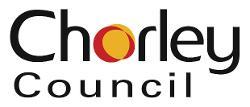Definition - Safeguarding Children
Safeguarding Children Safeguarding Children Safeguarding and promoting welfare - Is defined as:
• Protecting children from maltreatment;
• Preventing impairment of children's health or development
; • Ensuring that children grow up in circumstances consistent with the provision of safe and effective care; and
• Taking action to enable all children to have the best outcomes.
Consequently, this policy takes account of and will be implemented in accordance with Lancashire's Continuum of Need and Thresholds Guidance.
Children
Anyone who has not yet reached their 18th birthday. Therefore, the term children refers to children and young people throughout this policy. The fact that a child has reached 16 years of age, is living independently or is in further education, is a member of the armed forces, is in hospital, in prison or in a Young Offenders Institution, does not change their status or entitlement to services or protection under the Children Act 1989.
Parent
The term is used generically and refers to parents, carers, guardians i.e. those with parental responsibility.
Child protection
Part of safeguarding and promoting welfare. This refers to the activity that is undertaken to protect specific children who are suffering, or are at risk of suffering, significant harm. Safeguarding children, and in particular protecting them from significant harm, depends on effective joint working between agencies and professionals that have different roles and areas of expertise.
Types of Abuse - Safeguarding Children
Working Together to Safeguard Children (2018) defines the four categories of abuse used by Children's Social Care for determining child protection plans: physical, sexual, emotional abuse and neglect. It is important to understand that these may occur alongside one another and are not mutually exclusive.
Abuse comes in many forms with examples listed below but it is important to understand that it does not matter if the person intended harm or not but rather on whether harm or risk of harm occurs.
Physical Abuse
May involve hitting, slapping, pushing, kicking, misuse of medication, restraint or inappropriate sanctions).
Physical harm
may also be caused when a parent or carer fabricates the symptoms of, or deliberately induces, illness in a child.
Emotional Abuse
The persistent emotional maltreatment of a child such as to cause severe and persistent adverse effects on the child's emotional development. It may involve conveying to children that they are worthless or unloved, inadequate, or valued only insofar as they meet the needs of another person. It may include not giving the child opportunities to express their views, deliberately silencing them or 'making fun' of what they say or how they communicate. It may feature age or developmentally inappropriate expectations being imposed on children. These may include interactions that are beyond the child's developmental capability, as well as overprotection and limitation of exploration and learning, or preventing the child participating in normal social interaction. It may involve seeing or hearing the ill-treatment of another. It may involve serious bullying (including cyberbullying), causing children frequently to feel frightened or in danger, or the exploitation or corruption of children. Some level of emotional abuse is involved in all types of maltreatment of a child, though it may occur alone.
Neglect and acts of omission
The persistent failure to meet a child's basic physical and/or psychological needs, likely to result in the serious impairment of the child's health or development. Neglect may occur during pregnancy as a result of maternal substance abuse. Once a child is born, neglect may involve a parent or carer failing to:
- provide adequate food, clothing and shelter (including exclusion from home or abandonment);
- protect a child from physical and emotional harm or danger;
- ensure adequate supervision (including the use of inadequate care-givers); or
- ensure access to appropriate medical care or treatment. It may also include neglect of, or unresponsiveness to, a child's basic emotional needs.
Sexual Abuse, Child Sexual Exploitation (CSE)
Sexual abuse involves forcing or enticing a child or young person to take part in sexual activities, not necessarily involving a high level of violence, whether or not the child is aware of what is happening. The activities may involve physical contact, non-contact activities, such as involving children in looking at, or in the production of, sexual images, watching sexual activities, encouraging children to behave in sexually inappropriate ways, or grooming a child in preparation for abuse (including via the internet). Sexual abuse is not solely perpetrated by adult males. Women can also commit acts of sexual abuse, as can other children.
Recognising Abuse and Neglect - Safeguarding Children
Everyone must also be aware of other forms of abuse and contexts within which abuse can occur, what to look for and what to do in the event that they suspect, are told about or witness abuse or harm. Detailed guidance is available from the CSAP Policy. Recognising abuse will be informed through safeguarding training. For example (and this list is not exhaustive):
- Child victim or Trafficking
- Female Genital Mutilation
- Forced marriages and Honour - Based Violence (HBV)
- Child abuse linked to `Faith and Belief`
- Radicalisation
- Complex (organised / multiple) Abuse
- Fabricated or induced illness
- Gender - based violence / Violence against women and girls
- Child abuse and disabled children
- Self harm
- Domestic abuse
- Alcohol and substance misuse
- Mental ill - health
- Child Abuse and Communication Technologies
- Children and Families who Go Missing
- Child Sexual Exploitation (CSE)
- Children Living Away from Home (including Private Fostering)
- Children affected by Gang activity
- Peer abuse
To note: Domestic abuse legislation and best practice covers those over 16 years of age (age of consent), and in recognition that individuals could marry with parental consent at 16, now under The Marriage and Civil Partnership (minimum Age) Act 2022 the age of marriage has been raised to 18 years of age.




